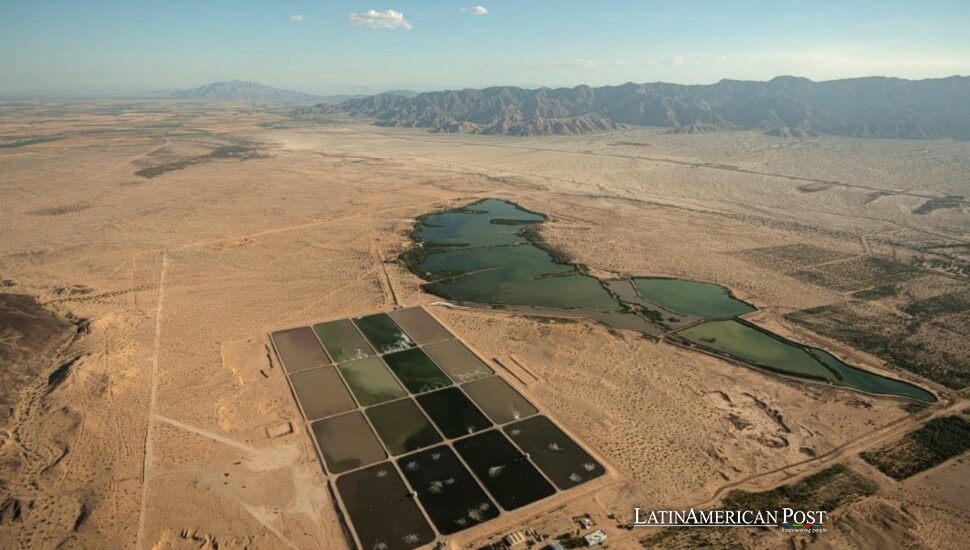Mexico’s Desert Oasis Where High-Tech Wetlands Spark Renewed Ecologies

In the scorching desert city of Mexicali, an ambitious artificial wetland called Las Arenitas transforms municipal wastewater into a life-giving resource. By purifying urban runoff and replenishing fragile ecosystems, this high-tech refuge offers fresh hope for sustainable water use in northern Mexico.
Reimagining Wastewater Through Innovation
The Las Arenitas reserve shows human creativity thriving despite limited resources while located south of Mexicali. This man-made wetland stands along extensive stretches of sun-drenched land where it processes the region’s wastewater, serving as a vital resource in an area that experiences extreme summer heat reaching 50°C (122°F).
“Here, we’ve effectively built a ‘kidney’ for the desert,” said Edith Santiago, sub-director of the Colorado River Delta program in Mexicali, in an interview with Wired. “By routing wastewater through a series of carefully engineered ponds and plant-based filtration zones, we’re able to remove contaminants and bring the water closer to a usable state.”
At the heart of this system is a sophisticated arrangement of aeration units, settling ponds, and aquatic vegetation—tools that collectively break down pollutants and return cleaned water back into circulation. Before arriving at the wetland, Mexicali’s municipal effluent is treated in a facility called Las Arenitas Treatment Plant. After passing through preliminary filtering to remove solids and floating debris, aerated lagoons use oxygen to promote the growth of bacteria that help degrade organic matter.
The wastewater then flows into so-called “facultative” lagoons, which combine oxygen-rich zones with oxygen-deprived layers, allowing multiple types of microorganisms to take turns digesting different contaminants. Finally, the water is routed into polishing ponds lined with reeds and other native plants that filter out remaining particles, heavy metals, and excess nutrients. “This multi-stage system lets nature do what it does best: recycle,” Santiago noted.
Technological Triumphs in an Arid Frontier
According to Wired reports, the initial performance of the Las Arenitas Treatment Plant fell short of expectations after its launch in 2007. Outdated equipment and overstressed capacity often led to inconsistent results. With Mexicali producing more than 80 million cubic meters of wastewater every year, the strain on the plant grew, and volumes sometimes exceeded the facility’s design limit of 840 liters per second, which occasionally peaked at over 1,000 liters per second.
Local and international stakeholders collaborated to upgrade the plant and develop the adjacent artificial wetland to serve as an additional “polishing” stage for the water. “By the time water finishes its journey through Las Arenitas, it’s much cleaner,” said Santiago. “Yet the plant has been operating above capacity since 2013, so we need further improvements. Advances like activated sludge technology could streamline treatment and use less land.”
Activated sludge systems involve continuously mixed basins where microorganisms in a suspended “sludge” break down pollutants more efficiently than in open lagoons. This method requires more sophisticated aeration but can reduce the footprint of treatment ponds, making it easier for cities like Mexicali—where land is limited and resources are tight—to process large volumes of wastewater.
Despite these constraints, the current wetland design already has a major environmental impact. Approximately 50% of the outflow from Las Arenitas is diverted to the Hardy River, a historic waterway that flows into the Colorado River Delta. The other half supplies agricultural irrigation, further reducing reliance on finite groundwater reserves. “We’ve effectively created a lifeline for river habitats,” Santiago told Wired.
Restoring Life to the Colorado Delta
Before large-scale dam construction and water diversions, the Colorado River Delta formed one of the most extensive and diverse wetlands in North America, stretching over 400,000 hectares across Baja California and Sonora before meeting the Gulf of California. Today, drought, climate change, and relentless extraction threaten its survival, leaving only about 15% of the original wetlands intact.
Las Arenitas offers a glimpse of what targeted restoration can achieve. “We measured just eight bird species and fewer than 100 total birds in the area when we did our first census in 2009,” Santiago explained. “Six years later, we spotted 160 species and counted more than 18,000 individual birds.”
From Yuma rails to peregrine falcons, the return of native and migratory birds underscores the wetland’s role as an important rest stop along the Pacific Flyway. Reeds and marsh grasses also help stabilize banks and naturally recharge shallow aquifers, further improving water availability in surrounding areas. “With every plant we introduce and each bird that arrives, we’re seeing nature’s own blueprint for resilience,” she added.
According to an ecological assessment published in 2023, Las Arenitas provides valuable services beyond water filtration. By moderating local temperatures, sequestering carbon, and offering educational opportunities, it has emerged as a regional model of multi-functional land use. Even local communities—like the indigenous Cucapá group—are benefiting from a cleaner Hardy River, which boosts subsistence fishing and cultural traditions tied to the waterways.
Toward a Sustainable Future
The narrative of Las Arenitas remains unfinished even though it has achieved some successes. The region faces two main ongoing difficulties which include securing funds for infrastructure advancements and convincing urban dwellers to reduce their water consumption. Santiago stated we need to cease consuming water at rates higher than its natural replenishment rate. Improved wastewater treatment provides some help but essential water conservation practices continue to be necessary.
The city of Mexicali depends heavily on both the Colorado River, which struggles to meet demands and its own underground aquifer systems. The permitted extraction levels of groundwater surpass its natural renewal capacity. Experts warn that severe shortages will emerge if current trends continue under the pressures of climate change and rising demand. The existence of advanced monitoring processes cannot overcome the significant lack of water quality and wetland health data, which results from their prohibitively high costs.
Walking across the new observation tower that overlooks the wetlands produces an optimistic spirit. The desert contains numerous iridescent pools which support diverse bird species and aquatic organisms. The air, while tinged with faint sulfur odors from nearby geothermal vents, also carries a feeling of renewal. “It’s an oasis,” Santiago concluded in her Wired interview. “A place where we’ve learned to cooperate with natural processes, even in one of the world’s hottest, driest regions.”
Also Read: Latam-GPT: A Bold AI Path For Latin America
Las Arenitas grew from an obscure wastewater project to become an exemplary model of ecological and technological synergy. Combining engineering breakthroughs with natural filtration methods demonstrates that committed planning together with financial support and ongoing partnerships produce significant outcomes in any severe environment. This desert oasis shows how Mexico and the global world can restore ecosystems while protecting water through its practical example.





